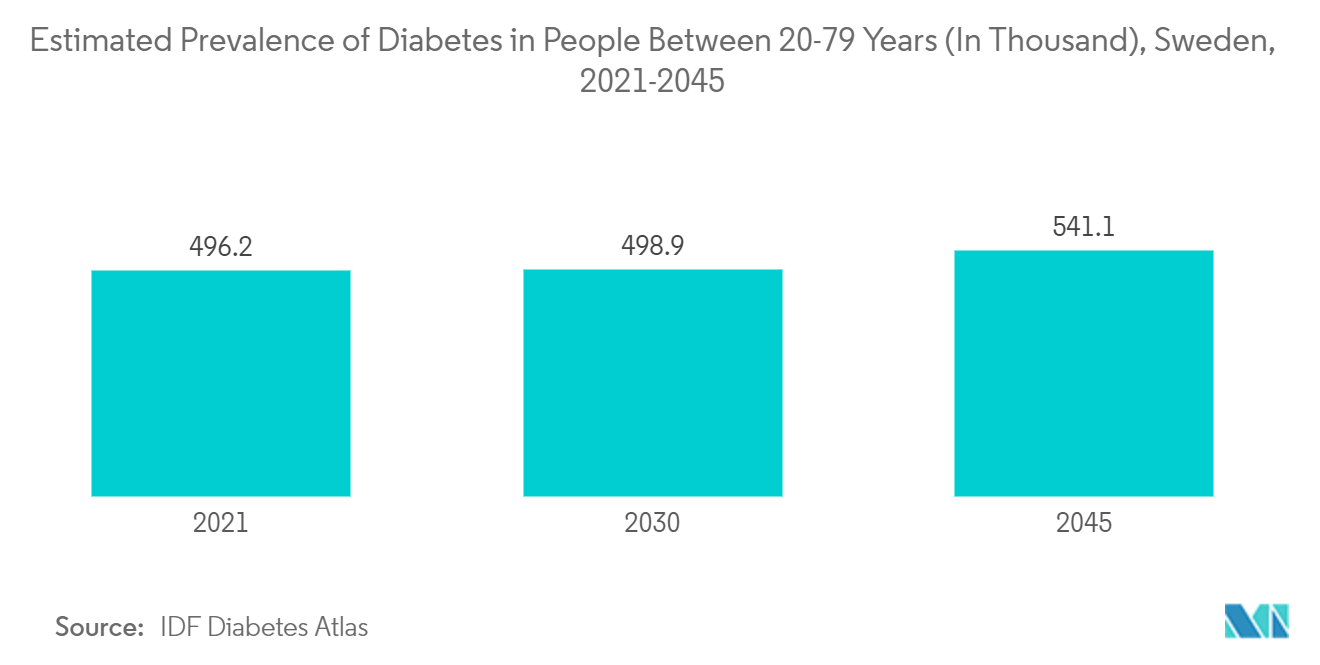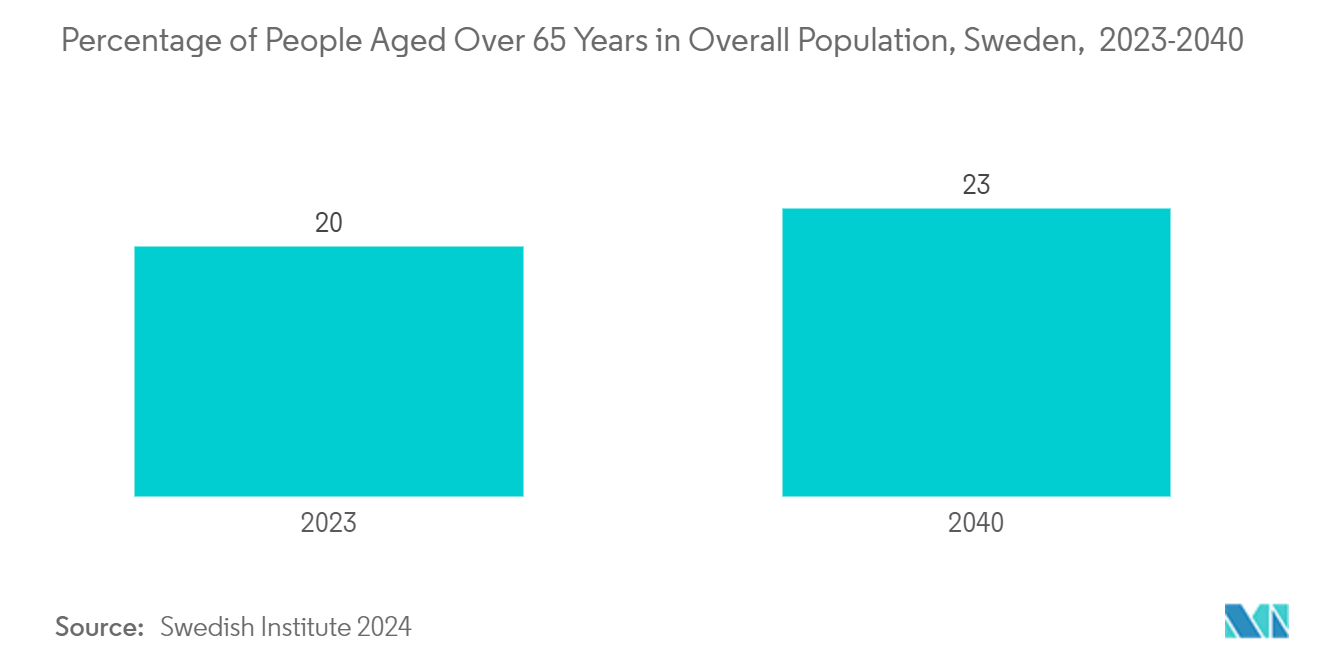Market Trends of Sweden Pharmaceutical Industry
Prescription Drugs Segment is Expected to Holds the Largest Share in the Market Over the Forecast Period
Prescription drugs are projected to dominate the market share during the forecast period. This trend is driven by several factors, including advanced research and development activities, an aging population, and a rising prevalence of chronic diseases like diabetes, cardiovascular issues, and cancer. Numerous companies are focusing on R&D for innovative prescription drugs. Their recent product approvals and launches are set to enhance the availability of these drugs for various ailments, fueling the segment's growth.
For instance, in May 2024, IRLAB Therapeutics AB secured approval from the Swedish Medical Products Agency to kick off a Phase I clinical study for its drug candidate, IRL757. Aimed at treating apathy, IRL757 seeks to improve the quality of life for millions grappling with Parkinson’s, Alzheimer’s, and other CNS disorders. Similarly, Lipigon Pharmaceuticals AB, in February 2024, got the nod from both the Swedish Medical Products Agency and the Swedish Ethical Review Authority via the European CTIS system to embark on a phase II study. This endorsement paves the way for Lipigon to advance its phase II study of Lipisense, a drug targeting severe hypertriglyceridemia. Such advancements are poised to expand these companies' prescription drug portfolios, further propelling the segment's growth.
Moreover, new approvals for prescription products in Sweden are set to enhance public access, bolstering the segment's expansion. For instance, in June 2024, the Swedish Medical Products Agency issued an updated license to Galderma. This license facilitates the future production and bioanalytical testing of Galderma's proprietary investigational ready-to-use liquid botulinum toxin A, branded as RelabotulinumtoxinA. Such licenses not only boost the production of prescription drugs but are also anticipated to drive the segment's growth in the coming years. Therefore, with ongoing R&D in pharmaceuticals and consistent product approvals, the segment's growth trajectory looks promising.

Rising Geriatric Population is Likely to Drive the Market Growth Over the Forecast Period
In Sweden, the rising elderly population is reshaping the landscape of health and care demands. This demographic shift has led to a pronounced uptick in the demand for pharmaceuticals, especially for managing age-related chronic diseases. As individuals age, they become more susceptible to chronic conditions like high blood pressure, high cholesterol, type 2 diabetes, coronary artery disease, arthritis, chronic obstructive pulmonary disease (COPD), and depression, underscoring the heightened need for pharmaceutical interventions.
For instance, data from the Swedish Institute in March 2024 highlighted that nearly 20% of Sweden's populace is aged 65 and above, positioning Sweden as a leader in Europe's elderly demographic landscape. In Sweden, elderly care, governed by the Social Services Act, is primarily managed by local municipalities. This care is chiefly funded through municipal taxes and government grants, supplemented by subsidies to alleviate out-of-pocket healthcare costs for the elderly. Given this substantial elderly demographic and the associated chronic disease risks, coupled with government-backed treatment support, the market is poised for growth in Sweden over the forecast period.
Moreover, Sweden witnesses a high volume of emergency cases among its elderly, further amplifying the demand for pharmaceuticals. An article from BMC Geriatrics in December 2023 noted that individuals aged 65 and above account for 35% of emergency department visits in Sweden. Notably, those over 80 tend to have longer hospital stays, leading to increased pharmaceutical consumption and bolstering market growth projections.
In conclusion, Sweden's expanding elderly demographic, combined with a notable surge in emergency cases, sets the stage for robust market growth in the coming years.


